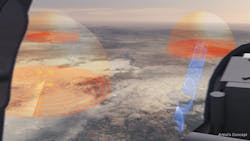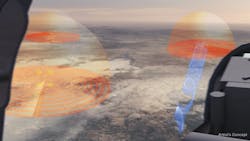Leidos moving ahead in EW effort to counter adaptive radar
ARLINGTON, Va. - Electronic warfare (EW) experts at Leidos Holdings Inc. in Reston, Va., are continuing their work to find ways to detect and counter digitally programmable adaptive radar systems that have unknown behaviors and agile waveform characteristics.
Officials of the U.S. Defense Advanced Research Projects Agency (DARPA) in Arlington, Va., announced a $12.9 million contract modification to Leidos for the DARPA Adaptive Radar Countermeasures (ARC) program, which seeks to develop EW capability to counter hostile adaptive radar systems based on their over-the-air signals.
Leidos originally won a DARPA ARC contract in March 2013. Vadum Inc. in Raleigh, N.C.; Helios Remote Sensing Systems Inc. in Rome, N.Y.; Michigan Tech Research Institute (MTRI) in Ann Arbor, Mich.; BAE Systems Electronic Systems in Merrimack, N.H.; and Systems and Technology Research (STR) in Woburn, Mass., also are involved in the ARC program.
Adaptive radar uses digital technology to change its characteristics dynamically to adapt to changes in its environment. In particular, adaptive radar is being designed to counter the effects of EW countermeasures and other RF interference.
Leidos has been working with Exelis Inc. in Clifton, N.J., on evolving advanced technology development in the DARPA ARC program. Harris Corp. completed its acquisition of Exelis last May.
Exelis is demonstrating Leidos software algorithms with an Exelis EW hardware-in-the-loop test environment as an enhanced capability to electronically defend against emerging radar threats.
Today's airborne EW systems are proficient at identifying analog radar systems that operate on fixed frequencies, experts say. Once they identify a hostile radar system, EW aircraft can apply a preprogrammed countermeasure technique. Yet the job of identifying modern digitally programmable radar variants using agile waveforms is becoming more difficult. Leidos and the other ARC contractors are working to enable systems to generate effective countermeasures automatically against new, unknown, or ambiguous radar signals in near real-time.
The goal of the DARPA ARC program is to develop ways to counter adaptive radar threats quickly based on over-the-air observable signals.
Key challenges are how to isolate signals clearly amid hostile, friendly, and neutral signals; figuring out the threat the signal poses; and jamming the signal. Modern enemy radar systems, however, are becoming digitally programmable with unknown behaviors and agile waveform, so identifying and jamming them is becoming increasingly difficult.
Leidos is developing processing techniques and algorithms to counter adaptive radar threats through real-time analysis of the threat's over-the-air observable properties and behaviors.
The program is developing a closed-loop system with signal analysis and characterization, countermeasure synthesis, and countermeasure effectiveness assessment. The system not only will be able to learn automatically to counter new radar threats, but also will enable human operators to command and receive feedback from the system.
DARPA officials say that software algorithms developed under the ARC program most likely will be used in existing or planned EW systems.
FOR MORE INFORMATION visit Leidos online at www.leidos.com.

